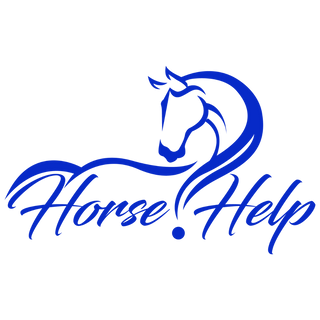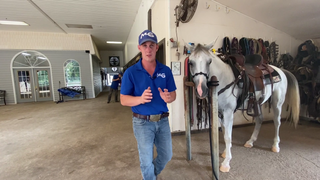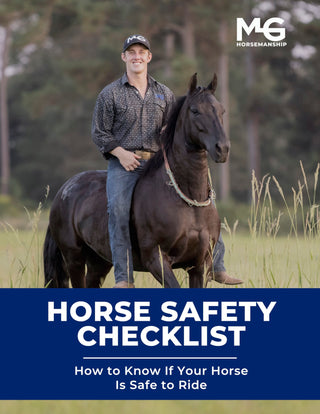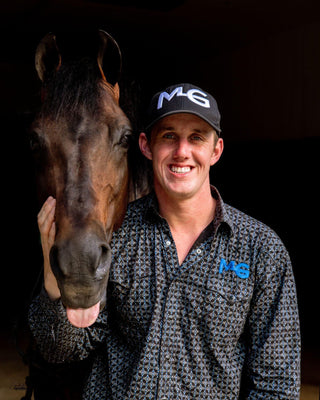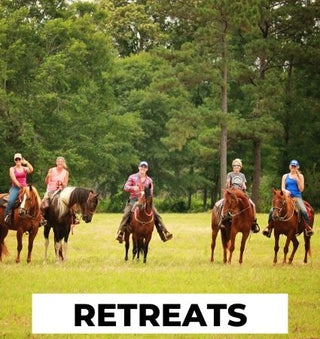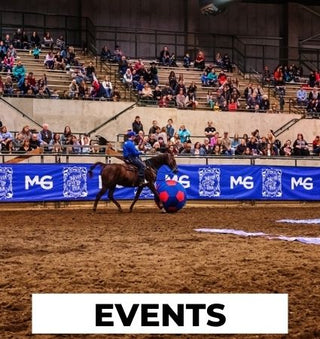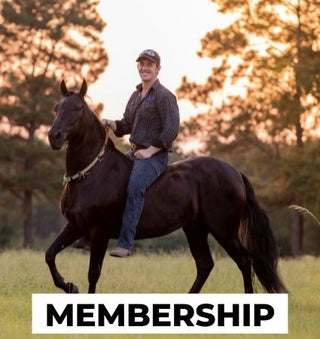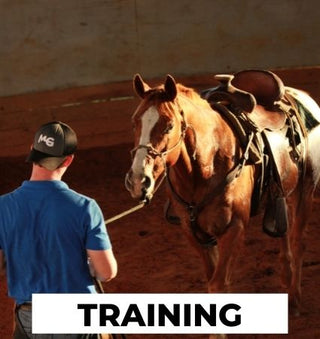Watch the Video Here or continue reading below!
Tying your horse safely and effectively is one of the most foundational skills in horsemanship. At Gascon Horsemanship, we often get asked, “How do you tie a horse to a hitching post properly?” In this post, we’ll break it down step by step, showing you exactly how to tie your horse to a sturdy H-style hitching post using a secure and reliable knot known as the clove hitch.
Why Use a Hitching Post?
Safer for You and Your Horse
Many riders tie their horses to fences, walls, or use cross ties—but these methods can lead to dangerous accidents. When horses get startled or uncomfortable, they might sit back, jump forward, or even crash into you. Cross ties can break, horses can get tangled, and handlers can get pinned.
An H-style hitching post creates a physical barrier between you and the horse. It allows you to work around them with ease and added safety, reducing the risk of being kicked, struck, or bitten. When you have the right setup, horsemanship becomes much smoother and more controlled.
Step 1: Position the Horse Correctly
Head Over the Hitching Post, Body on the Other Side
Approach the hitching post and guide your horse so their head comes over the crossbar of the “H.” Their body should stay on the opposite side. This positioning centers your horse in a safe and balanced stance, making it easier to tie them securely.
Step 2: Thread Through the U-Bracket
Use the Built-In Guide for Centering
Most H-style hitching posts at professional facilities like ours include a U-shaped bracket at the top of the post. This U-bracket helps keep the horse’s head centered and reduces unwanted movement while tied. Feed the rope through the U before tying the knot.
Step 3: Tie a Clove Hitch
Secure and Simple Knot for Horse Safety
The clove hitch is a reliable, slip-resistant knot that’s ideal for tying a horse. Here’s how to do it:
-
Make a U with the rope.
-
Use your outside hand to go under your inside hand, forming a loop.
-
Repeat the same step to create a second loop.
-
Pull the rope tight—remember, no knot is a knot without a bite!
The clove hitch is strong enough to hold even the most powerful horses, especially when used with high-quality gear.
Gear Matters: Use Durable Rope and Halters
Why Quality Equipment Makes a Difference
At Gascon Horsemanship, we use rope halters and lead ropes that are built to last. In fact, they come with a lifetime guarantee. If your horse ever breaks one, give us a call—the phone number is on the tag—and we’ll replace it free of charge.
A lot of “sit back” issues arise from cheap, breakable equipment. When a horse learns that pulling back will free them, it becomes a dangerous habit. Strong, dependable gear keeps both horse and handler safe and prevents training setbacks.
Benefits of the H Hitching Post
Freedom to Work Without Risk
When your horse is tied correctly to an H-style hitching post:
-
You have full access for grooming, saddling, vet work, or farrier visits.
-
The barrier gives you space and control.
-
It minimizes dangerous behavior and reduces training problems before they start.
Whether you're doing groundwork, handling a nervous horse, or teaching young stock how to stand quietly, the H-post is a game-changer.
Need an H-Style Hitching Post?
We Can Help You Get One for Your Facility
If you’re interested in adding an H hitching post to your barn or training setup, we’re now building them in partnership with E and E Fab. These posts are ideal for:
-
Training
-
Vet procedures
-
Farrier work
-
Daily grooming and tacking
Contact us today and we’ll be happy to get one built for your facility.
Final Thoughts
Simple Steps Lead to Safer Horsemanship
Learning how to tie a horse to a hitching post isn’t just about knots—it’s about safety, control, and confidence for both horse and handler. Using the clove hitch on a sturdy H-post ensures your horse stays put and your training sessions run smoothly.
